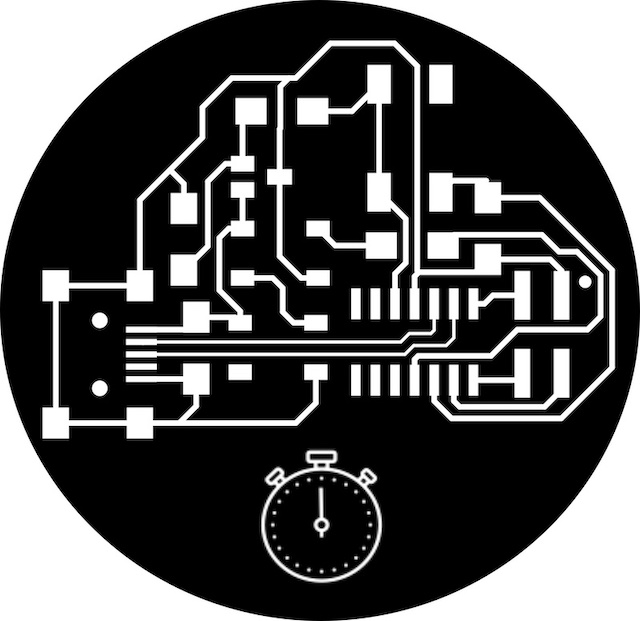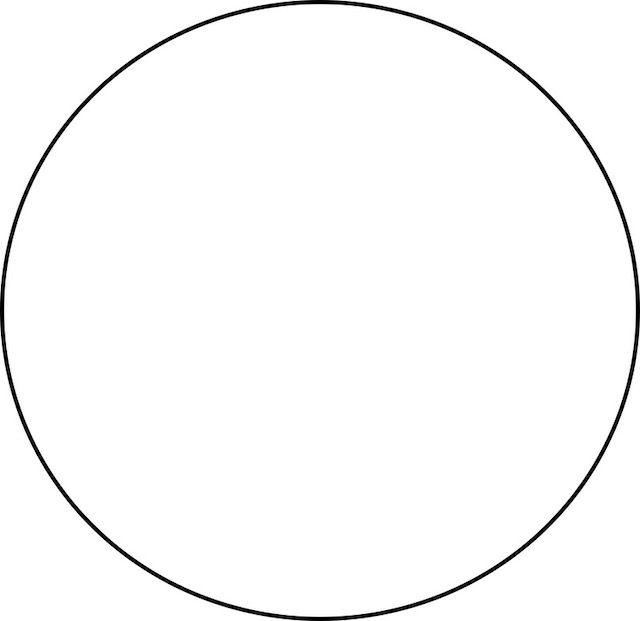11. Output devices¶
Link to this week’s Group Assignment
Output devices : Local class¶
Components inside a board¶
Microcontrollers¶
-
SBC (Single Board Computer)
-
Closer to a PC or Mac. All elements are contained on a single board.
The most known one is the Raspberry Pi (not open source)
[xa: investigate other open source options]
-
HAT (Hardware Attached onn Top) build to extend the functionalities of a SBC. It conforms to a specific set of rules that will make life easier for users. set of instructions.
Microcontroller board made by Raspberry Pi called specification, it is a microcontroller board that looks similar to Raspberry Pi Zero.
[xa: look up Raspberry Pi vs. Raspberry Pi Pico]
“How to choose a microcontroller or an Arduino for our FabAcademy projects?”¶
Aspects to keep in mind:¶
“A feature only makes a board better if you actually use it” Programming and choosing the right components does the trick. More is not always better.
[xa: “keep it small, keep it simple and stay out of debt”]
Questions:¶
- Is it portable or stationary?
- How is it powered? AC or DC? What are the input voltage ranges?
-
- AC: Europe 230V; America: 110V
-
- DC common voltage levels: 5V, 3V3, 1V8 (not so common yet)
- How can we power it?
-
- Do we use USB? –> Good for stationary, sometimes usable with power packs build with 1850 Samsung batteries. USB is always 5V
[xa: consigue un 1850 Lithium Li-ion Battery Expansion Shield 3V Micro USB - gives out 5V] - Does it have battery connector? - Pin Types “Pin Out” Pins with ~ have a pin available capability
ADC (analog digital converters)¶
-
To control things, read things through a digital read function the same as those analog silicones.
-
When choosing a board count all the needs you have
- High precision analog outputs
Input / Output capabilities¶
- Acronyms with S are for IDC (Inter Device Communication) to communicate with sensors
- SICK MSD
- I2S audio transmission
- I2S used for networks of peripherals, such as sensors
-
TXD and RXD for occasional communication
-
! Beware of barrel jacks because they have polarity.
- -Look up whether the sleeve is positive or negative: https://electronics.stackexchange.com/questions/33968/how-to-tell-polarity-expected-of-a-dc-barrel-jack

- Communication vs. protocol
–What is that we need, how far?
–WiFi: expensive - BLE: limited connectivity but low consumption
–Zigbee
- Data/Processing capabilities
Speed does your project crunch a lot of numbers of gather huge amounts of data? The different memories are an important aspect to take into account based on the documentation of each of them RAM ‘volatile memory’ that erases as soon as the code is disconnected — [xa: just like yours, dear x] for communication and calculation is better a big RAM.
-
Small is 2kb, 32kb is big enough for most kinds of communications or tasks.
-
When RAM is exceeded, is called ‘overflow’ - freezing, acting up.
-
Flash size/ External Flash: determines how big the code can be. 4kb is small. 256kb is good for many projects. The ESP8266 has 4Mb (or even 16Mb) SAM D tend to have a higher amount of RAM.
5. Usability¶
- size
- power requirements for wearables
- user interface
- documentation
- tutorial availability
- “if no documentation or tutorials are available, move to something easier”
6. Price¶
- what is budget?
- consider scalability
7. Programming Interface¶
- External interface needed (e.g. FTDI)
- Arduino IDE compatible
- Platformio compatible
- Other software/hardware needed
[xa: look at Adafruit info on how to chose a microcontroller]
Power¶
Inputs and outputs¶
Price¶
Recap on electronics¶
Electricity¶
Voltage¶
- Some components work with AC and others with DC
Currently¶
OHM’s “lastwordonnothing”¶
Intensity is Voltage / Resistance
Resistance = Voltage / Intensity
- Tinkercad has a simulator for electronics and how circuits look like.
Inputs¶
Outputs¶
-
Something that we actuate afterwards
-
Actuators
Electromagnetic -¶
Create motion
Electromagnetism¶
Induction¶
When current goes through a wire, a magnetic field is generated around it. [xa: completa con base a la presentación, por favor]
Relay¶
-
With small DC voltage controls a coil and opens a switch - opening AC or DC circuits
-
Used to control heavy loads with a simple digital signal from a microcontroller
SSD (Solid Stay Relay)¶
- As opposed to a relay, it has no movable contacts
- Has a light source
Motors¶
- How much torque
- How much current
- Always remember Newton
Important: check the characteristics of the motors to gauge the characteristics adequately
DC Motors¶
- They rotate at high speeds by applying current to their 2 poles.
- The speed will depend on the Voltage
How does an electric motor work? - DC
-
A motor has a “stator”, the static part; and a “rotator”, the rotating parts
-
They are easy to control.
- The direction of the motor gets controlled
MOSFETS¶
- A kind of transistor
- (Metal Oxide Semiconductor Field Effect Transistor)
- Functions as a digital switch triggered by voltage variation
- Allows for fast activations in comparison to a “relé” (relay) based on mobile mechanical Components
Servomotor¶
iclude <Servo.h>
servo myservo;
void setup ()
- Close loop controls
- Used with a pin PWM
Diodes - Light LED¶
-The color of the LED is defined my their material and each color has different requirements and needs to be added to different pins * check the resistance for each of them in the datasheet - each has a range of values it can work on. - the math needs to be made in order to calculate the right amount of current going into the LED - Neopixels are the most common addressable LED - They come in many shapes as strips, matrix, rings, individually
**There are two main libraries: FastLED or Neopixels [xa: add here links to the libraries, a guide for the LED use and the rest of guides on the slides documentation]
**Charlieplexing it is a method to control N(N-1) LEDs with N pins
EL Wire (Electroluminescent Wire)¶
-Thin copper wire coated with a phosphor that produces light through electroluminescence when alternating current is applied to it.
-They work with AC, so an inverter is needed
Piezoelectric¶
- Piezo element is a circular shaped metal plate with a thin coating of Piezo material. The piezo material used is Lead Zirconate
[xa: revisa the tone Arduino library and fritzing]
In Fabcloud programmers go to: Programmer SWD The SAM D11C can be programmed with Arduino and in order to save memory. Booting can be done in Arduino.
Tools > Bootloader size: No bootloader
For that we need the programmer.
The programmer will program our board.
The computer will look for a programmer called Atmel EDBG
Sketch > Upload using programmer
Check if it appears
Sketch > Export > Compile Binary
It will save it on our desktop as such.
Signal¶
PWM (Pulse-with modulation)
analogWrite
analogWrite(pin; value);
0-255
Project ideas¶
- Digital spindle
- Incontinence Trainer
Useful links¶
Process¶
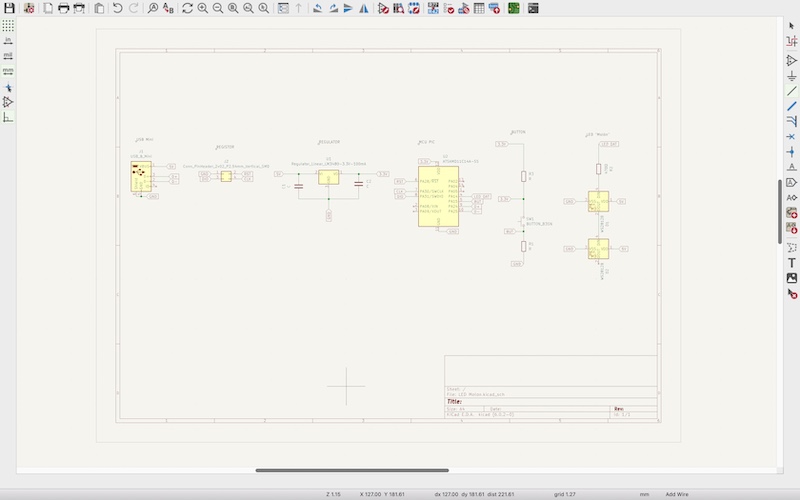
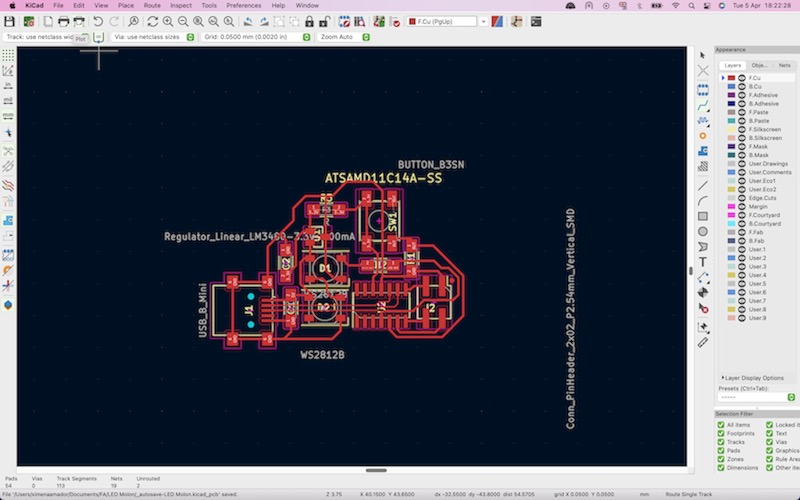

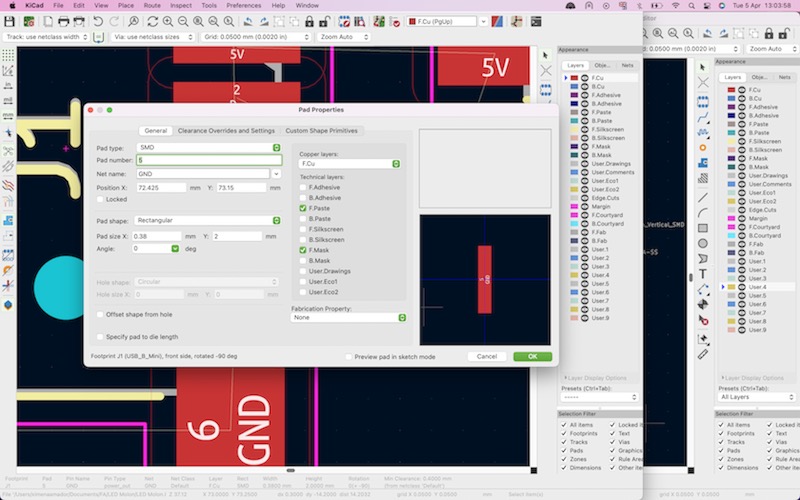
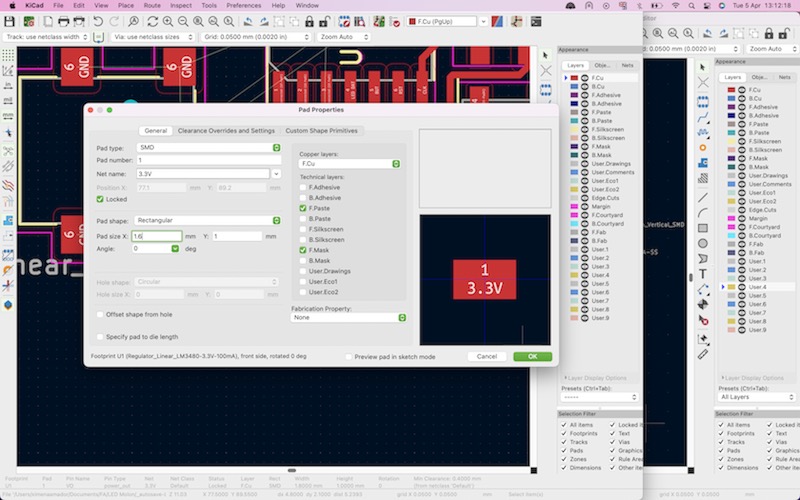

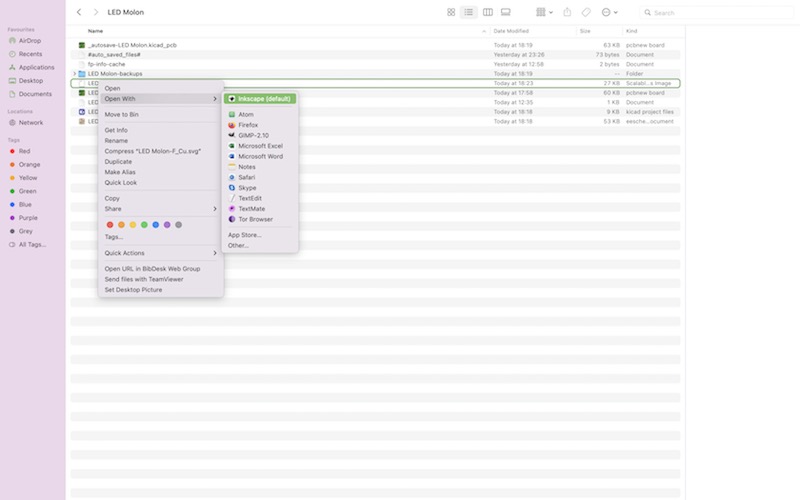
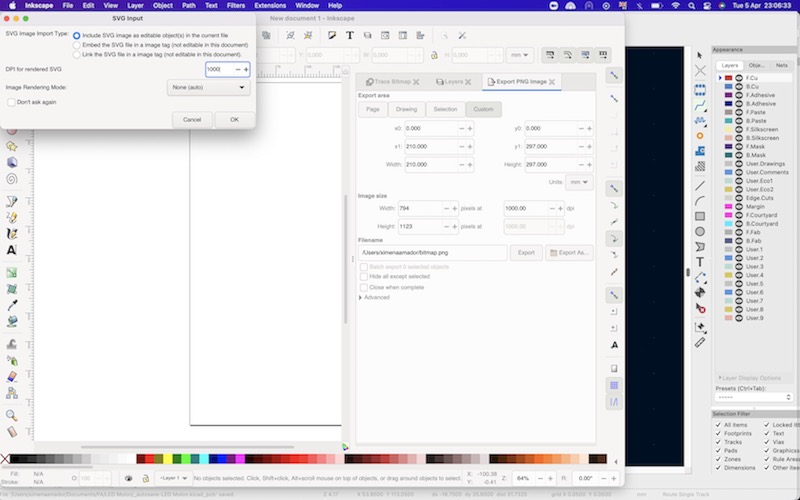
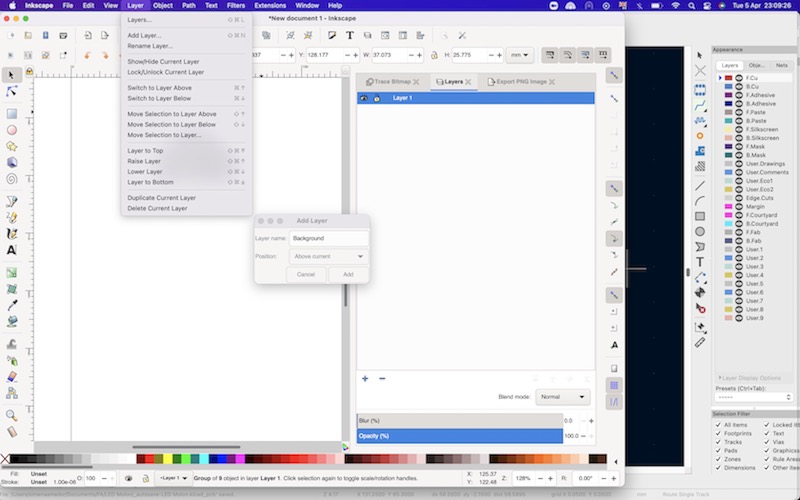
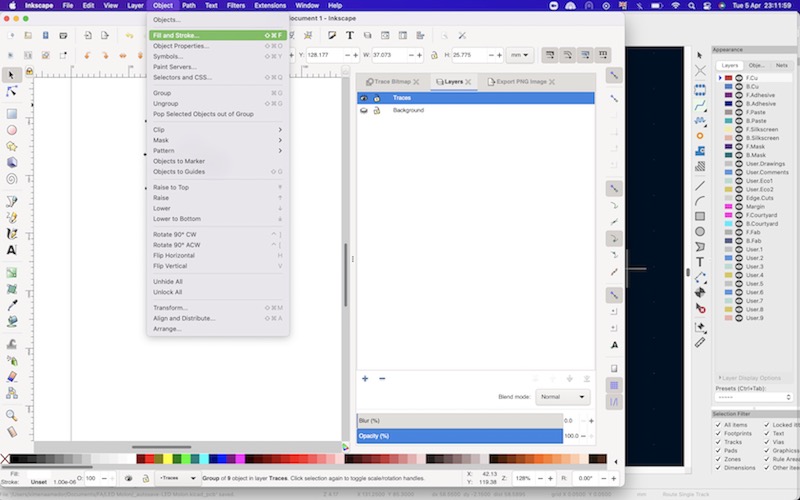
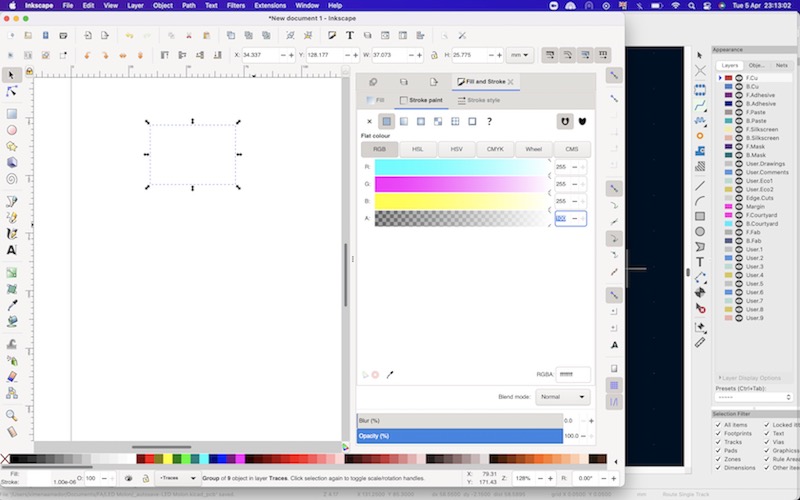
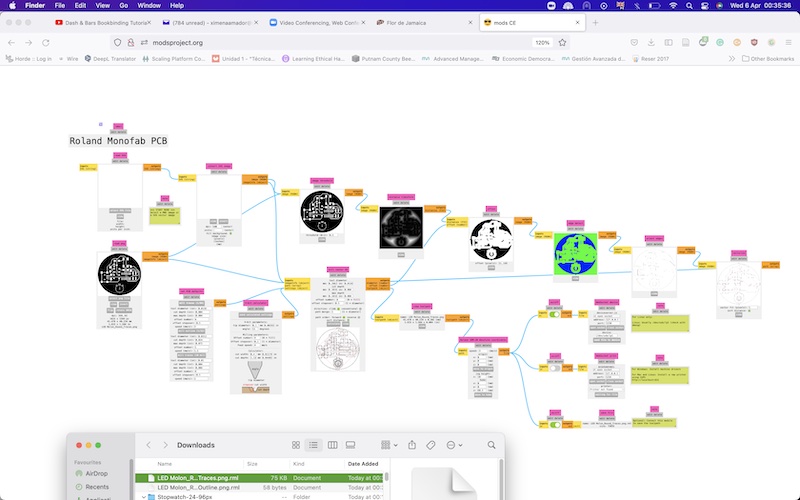
![]()
